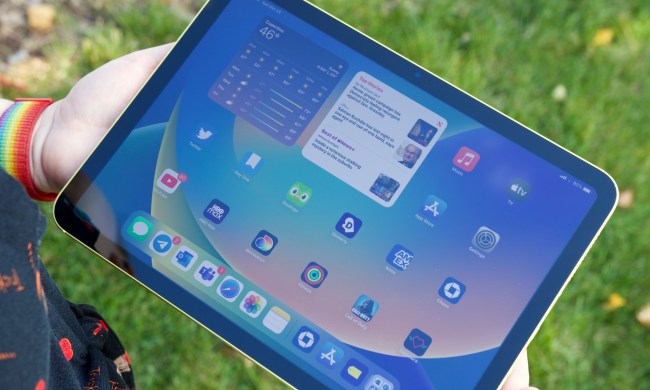At $100 on contract, the Droid Mini is affordable, but for a small phone, it doesn’t skimp on hardware. The Mini is as good as the Droid Ultra in almost every way.
Should going small mean scaling back? That’s often the choice smartphone buyers have to make when deciding between large screen phones and more compact 4 – 4.3-inch models. Even when the devices bear the same name or branding as their superphone siblings, the mini versions often have scaled back specs. Recently, we’ve seen this on the HTC One Mini and the Galaxy S4 Mini. Is Motorola’s new Droid Mini more of the same?
On the outside, the Mini looks just like a smaller Droid Ultra and Motorola reps repeatedly told us to think of them as the same phone just in different sizes. We went hands-on to find out how true that is.
The Droid Mini sports a 4.3-inch display tucked into a very compact body. The design isn’t as ultra slim as the Ultra, though that’s not as much of an issue given the overall smaller size. The glossy back and smooth, comfortable edges make an appearance here, too, and sadly the fingerprint problem we mentioned in the Ultra hands-on is just as bad. Keep a cloth handy. We like the way the Mini feels in the hand, especially when typing and swiping. Most of you will have no trouble reaching every edge of the screen with your thumb, and the comfortable grip will keep the phone cradled securely in the hand while you use it.
Motorola reps repeatedly told us to think of them as the same phone just in different sizes.
Other than size, the difference between the Mini’s display and the Ultra’s is type. You get LCD, not AMOLED, with the smaller Droid. Same 720p resolution, though. And the screen is still bright and vivid.
Other internal specs are the same as the other Droids. Like the Ultra, the Droid Mini runs on Motorola’s X8 Mobile Computing System that utilizes eight cores. The central processor is dual-core, the graphics processor (GPU) is quad-core, and the other two cores handle sensor and natural language processing. All together this makes for a speedy phone (the 2GB of RAM helps) that can do some neat tricks. The natural language bit comes from Google Now, and it’s possible to wake the Droid Mini via voice by saying “Okay, Google Now.” All of the voice commands available for Now are integrated into the phone, and even when demoed in a crowded, noisy room, the Droids were able to recognize and interpret voice commands quickly.
Other great features include Active Display, which detects when the Mini is resting on a flat surface and shows the time if you just nudge it. You can tap and hold the icon to see text of other notifications and decide if you want to open or ignore it. We also like Droid Zap for sharing photos with friends within 300 feet. You need a Droid Ultra, Maxx, or Mini to send photos, but any Android phone can accept them (as long as you have the app). Droid owners can send a link to the app directly to friends. Sharing to a larger screen is easy thanks to built-in Wireless Display. It will work with any Miracast-enabled television or streamer.
Though Motorola is owned by Google, the division’s engineers still like to go their own way. The new Droids have physical Home, Back, and Recent Apps buttons, for instance. With Android Jelly Bean those aren’t needed or necessary, but Motorola reps say that users still want them. The operating system itself is mostly untouched except for some added features, apps, and widgets. Plus some modifications to the camera app.
Compared to the stock Jelly Bean camera, the Droid Mini’s isn’t that much of a step up in terms of settings and features. HDR is available (and has an Auto setting so you don’t even have to think about it) as is panorama. Oddly, Photosphere is missing. That’s a huge bummer given the quality of the 10-megapixel sensor. Initial images looked decent on the small screen, though we did note some noise in mixed light shots. We saw the same on the Ultra and the Maxx – no surprise since they use the same hardware. The Mini is just as quick to launch the app by shaking as well.
Motorola claims you’ll get up to 28 hours of battery life with the Mini. That smaller screen means less of a power draw, so it’ll get a bit more juice than the Ultra. Still, if you want super long life you should check out the Maxx.
The Droid Mini will sell for $100 on contract – $100 less than the Droid Ultra – with 16GB of internal file storage (no MicroSD). That sounds like a good deal for small screen lovers. Same performance, same features, slightly different display, affordable price. The Droid Mini is one of the most promising of all the MiniMe versions coming out lately. We’ll see how it stacks up to the competition, including the Droid Ultra, when we do our full review.
Highs
- Compact design
- Powerful performance
- Good display
- Useful features and controls
Lows
- Glossy design is fingerprint magnet





